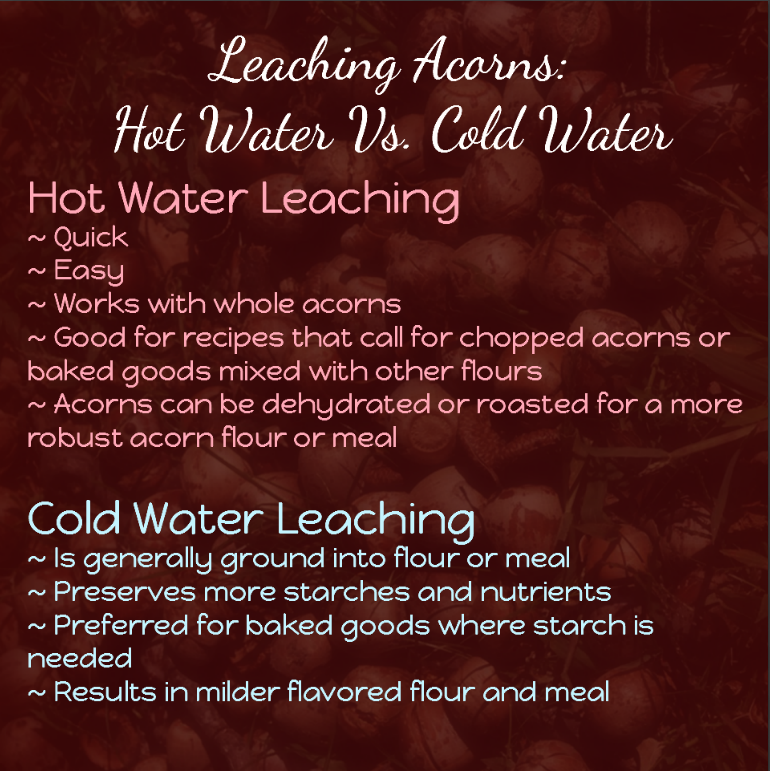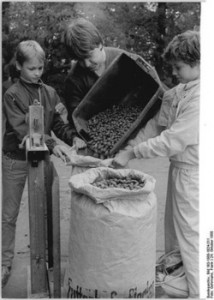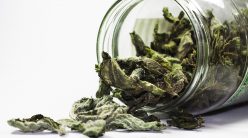(Note: This post was originally published many years ago in my green living column on examiner. I’ve since published a book with lots more information on finding and processing acorns via hot water processing and cold water processing, tips and tricks, and with 70+ recipes to use acorn flour. You can read more about the book here. –Alicia)
Late summer and early autumn are acorn harvesting time in Minnesota and much of the country. If you’ve never tried making your own acorn flour from this plentiful, free, nutritious food source, you’re in for a treat! It’s a lot of effort, but the results are delicious.
Acorns were a large part of many Native American tribes’ diets and have been enjoyed by many families for generations. The nuts can be ground into acorn flour or enjoyed whole. We use our acorn flour to make acorn muffins, which are surprisingly tasty. The flavor and aroma are distinct and almost buttery. It’s also a lot of work for not much product, but the fun is in the process, especially for children.
Our family has harvested acorns for about 15 years now. When we first started, Daryl found many conflicting instructions online so he experimented until he came up with the way that works best for us.
There are several ways to leach the bitter tannins out of acorns, and boiling water leaching is one of our favorite ways. There are advantages and disadvantages to each method.

Here’s how to harvest acorns and do boiling water leaching:
1. Go to an area with lots of oak trees and gather up lots and lots of acorns. If you can get to freshly fallen ones you’ll have less weevils to deal with. Also, the earlier in the year, the better. Wait much longer and most will be buggy.
2. Take your stash home and play “sink or swim.” When weevils have bored a hole in the acorn and laid eggs, it makes them lighter and they’ll float in a bucket of water. Toss those acorns back outside for the squirrels. Keep the sinkers. You will probably have a lot of floaters, which is why you gather lots and lots.
3. Use a nutcracker or rock to break the shell and remove the round nut. Use a paring knife to cut away any parts with tiny holes or black spots. You don’t need to remove the light brown covering.
4. Put the nuts in a pan of water and bring it to a boil. Drain, add more water, and repeat until the water is clear. You’re leeching out the bitter tannins, which is necessary to make them tasty. Some acorns (from the white oak families) have fewer tannins, and may only take 3 boilings; red oak acorns have LOTS of tannins, and will take a lot more. You can use a tree ID book or look up online how to tell the leaves of oaks apart.
5. Spread the nuts on a cookie sheet and bake at 200 degrees for about 2 hours. This will fill the house with a smell that you and your kiddos will forever associate with fall!
6. You can now grind the acorns into flour or you can store them in airtight containers until you grind them. If you grind them, make sure to store the flour in the freezer, as it goes rancid more quickly than wheat flour.
There are lots of acorn recipes here on our blog or you can add a half cup or so to your favorite cookie, muffin or brownie recipe in place of an equal amount of the flour. I also like to make up acorn bread and use that for stuffing, and lately we’ve been experimenting with lots of other ways to use them — from ice cream to porridge to vegetarian meatballs. They’re delicious any way you use them!
Have fun!






